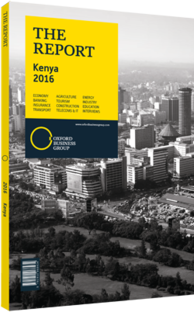Darshan Chandaria, Group CEO, Chandaria Group of Companies: Interview

Interview: Darshan Chandaria
How would you rate Kenya’s manufacturing sector in terms of global and regional competitiveness?
DARSHAN CHANDARIA: Kenya can be regarded as the central country of the EAC and it has lived up to this expectation. It continues to be the driving engine of the region’s growth. The recent focus on developing fundamental infrastructure has been very positive and the growth of the manufacturing sector has unquestionably been the backbone of the economy. Regionally and internationally Kenya’s competitiveness is definitely improving. We have seen many policy changes and an increased focus coming from various government institutions and agencies, which have taken important steps to ensure the further development of the manufacturing sector.
The private sector has lead most of the manufacturing development. Foreign direct investment in recent years has also picked up. The industrial base created in Kenya is unparalleled in the region. The recent exponential growth in the real estate market has also, in some ways, been fuelled by the growth of the manufacturing sector. Therefore Kenya’s manufacturing sector has created a competitive edge in the region. Like all other developing economies, there are challenges. However the regular, positive and constructive engagement between the private sector and various government agencies continues.
What impact does the current state of Kenya’s electricity supply have on manufacturers?
CHANDARIA: It is a major challenge, but the government has realised the gravity of the problem, and we have seen the authorities finally taking a proactive approach to the issue. As a result, the cost of electricity has come down, and the consistency of supply has improved – this is something that all Kenyans have experienced. This means fewer production interruptions and stoppages, as well as less reliance on generators for backup. This in turn means less downtime and a lower fuel bill. While the situation is not yet perfect, there is no doubt that the topic has been prioritised on the government’s agenda.
What will be the effect of the declining shilling and rising interest rates on manufacturing?
CHANDARIA: On the supply side, many local manufacturers are dependent upon imports, and given that the shilling has declined significantly against the dollar since the start of 2015, their import bills and thus their production costs have increased. On the demand side, you have a growing middle class, rising overall demand and a consumer base that is more aware and more willing to try new products. Yet in the face of rising costs, like any discerning consumers, Kenyans will start cutting out spending on goods not considered to be necessities. So the question arises as to how much of the added cost manufacturers are expected to absorb, and how much can be passed on to consumers before they stop buying.
How do you expect distribution channels for fast-moving consumer goods to evolve?
CHANDARIA: Kenya has been at the forefront of retail development in Africa, and the business trend in one way is moving towards formal retail. You can see the number of supermarkets, malls and modern retail centres has increased significantly in a short time, and they are capturing more and more business. That being said, traditional distribution channels are, and will continue to be, extremely relevant, especially for companies with products directed towards more economic segments, since traditional distribution channels are utilised more at the bottom of the pyramid. It will also be interesting to see how the entry of major foreign retailers will impact the market. This should completely change the dynamics of the market. We expect increased competition not only to attract clients but also in securing prime locations.
You have reached the limit of premium articles you can view for free.
Choose from the options below to purchase print or digital editions of our Reports. You can also purchase a website subscription giving you unlimited access to all of our Reports online for 12 months.
If you have already purchased this Report or have a website subscription, please login to continue.

